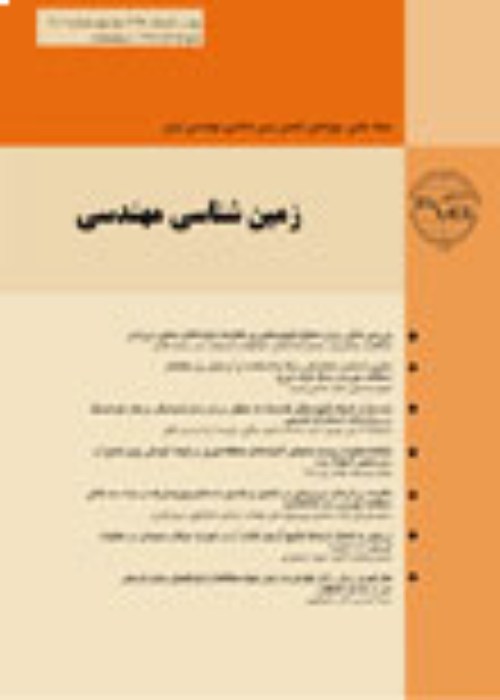Evaluation of tensile strength using hydraulic fracturing test results and its comparison with Brazilian tensile strength and point load strength, case study: Asmari formation
Author(s):
Abstract:
Nowadays, the need to enhance the exploitation of hydrocarbon resources due to importance and increase in the rate of consumption of this material is more crucial than ever. On the other hand, the rock formations with low effective porosity, which are considered as hydrocarbon reservoirs prevented to have a suitable productivity of these reservoirs. Hydraulic fracturing is known as a process of initiation and propagation of fractures caused by fluid injection into the part of the boreholes in rock formations, which has an important role in increasing of the exploitation of hydrocarbon reservoirs with low efficiency. Initiation and propagation fractures have a high dependency to the parameters and properties of reservoir rocks. Among these parameters can mention, such as rock material, rock tensile strength, pore pressure and etc. Importance tensile strength of rock for predicting the breakdown pressure of hydraulic fracturing test is remarkable and this parameter is a function of lithology of reservoir rock. Hence, in this study with sampling at typical section of Asmari formation, evaluation of breakdown pressure parameter as a function of rock tensile strength and lithology parameters has been paid. The ratio of hydraulic fracturing tensile strength to Brazilian test tensile strength and Point load test allows prediction of the tensile strength and is an important parameter for simulation of hydraulic fracturing test results. Comparison of these ratios shows that the tensile strength parameter is dependent on the test method. Rock tensile strength that obtained from hydraulic fracturing test is 20.08 MPa and proportion between tensile strength of hydraulic fracturing test to Brazilian test is equal to 2.35. Slight differences in the distribution of data and regression coefficient 0.9 are due to the small karst cavities, relatively low porosity and intragranular voids because of fossils in the rock structure. All evidences, including the results of physical and mechanical properties reveal the influence of lithology on the results of tensile strength obtained from hydraulic fracturing test.
Keywords:
Language:
Persian
Published:
Journal of Iranian Association of Engineering Geology, Volume:8 Issue: 3, 2016
Page:
65
magiran.com/p1645268
دانلود و مطالعه متن این مقاله با یکی از روشهای زیر امکان پذیر است:
اشتراک شخصی
با عضویت و پرداخت آنلاین حق اشتراک یکساله به مبلغ 1,390,000ريال میتوانید 70 عنوان مطلب دانلود کنید!
اشتراک سازمانی
به کتابخانه دانشگاه یا محل کار خود پیشنهاد کنید تا اشتراک سازمانی این پایگاه را برای دسترسی نامحدود همه کاربران به متن مطالب تهیه نمایند!
توجه!
- حق عضویت دریافتی صرف حمایت از نشریات عضو و نگهداری، تکمیل و توسعه مگیران میشود.
- پرداخت حق اشتراک و دانلود مقالات اجازه بازنشر آن در سایر رسانههای چاپی و دیجیتال را به کاربر نمیدهد.
In order to view content subscription is required
Personal subscription
Subscribe magiran.com for 70 € euros via PayPal and download 70 articles during a year.
Organization subscription
Please contact us to subscribe your university or library for unlimited access!


